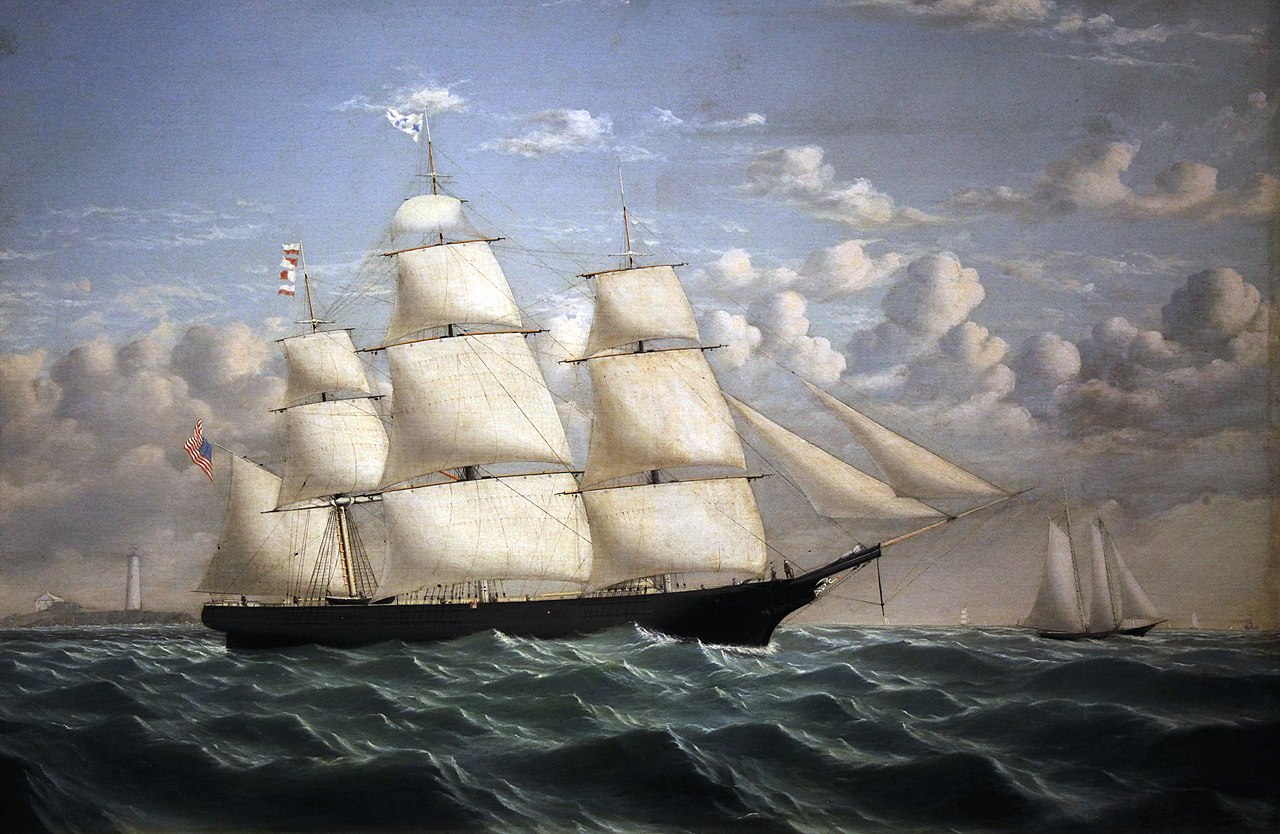JUNE 6, 2025 – (Cont.) For the next two summers, my time at the cabin was equally divided among four pursuits: practicing my violin, writing letters, reading articles in old Coronet magazines from the 1930s and 40s stored in various nooks and crannies around the cabin, and, of course . . . sailing the ocean blue.
Practicing assumed priority over everything else, as I was determined to make up for all the time I’d willfully squandered from age five to fourteen by not having practiced. My practice sessions at the cabin took place on the front porch, where I’d devote the entire morning to scales and arpeggios and etudes. My eyes, however, were trained on the pine rooted tenaciously on the steep slope that dropped from the retaining wall in front of the cabin nearly straight down to the lake. I remember watching on calmer days the terminal leaders of the younger pine. If they swayed perceptibly, I held out hope that there was enough wind for sailing. If they didn’t move, I summoned the hope that by early afternoon a sufficient movement of air would develop to allow me to cruise around in our corner of the lake at least.
When a big wind blew, the tempo of my scales and arpeggios increased accordingly, as did my pace in eating lunch. Then it was time to take the Fleetwind for a long ride. My practice routine on such days didn’t suffer. I was simply more efficient with my transition time between practice and sailing, and if anything had to suffer, it would be my reading Cornet articles. Before supper I’d practice Bach. After supper I’d work on repertoire. But sunsets and moonrises were reserved for sailing again—provided there was sufficient wind. Some of my most memorable cruises were on nights of a full moon, as I sailed along our shoreline, trees set aglow in the silver lunar light.
But as it was said whenever I complained about fun times drawing to a close, “all good things must come to an end,” and so it was with Fleetwind.
To replace the makeshift mooring anchor Dad had assembled ahead of the boat’s initial contact with water, he mixed up a batch of concrete and poured it into an old two-gallon pail commandeered from his well-organized junk supply next to his equally well ordered non-junk inventory. He then sank an industrial-gauge eyebolt into the fresh concrete and let it cure overnight. Next, he came up with a sturdy chain, attached one end to the eyebolt and clipped a spring hook to the other end. For two summers Dad’s anchor worked fine.
Then came the brief but fateful summer storm. My oldest sister and her boyfriend were on hand for a rare two- or three-day visit. On that afternoon of the storm, someone had the bright idea of driving into town for ice cream cones. I went along. While we were in Hayward, the black clouds of the stormfront could be seen marching due east south of town. I remember commenting aloud, “That’s headed straight for the lake.” The northern edge of the storm soon clipped Hayward with a deluge and ferocious wind. I worried about the Fleetwind. Would the anchor hold?
After the sun reappeared in Hayward, we procured our ice cream cones and headed back. My mind was not on the ice cream, however. As soon as we pulled up to the yard, I bailed from the back seat of the car and headed around to the other side of the cabin. I did not run. I walked—cautiously—as if by a measured pace I could somehow prevent what might have already occurred, or barring that, mitigate what damage might have ensued. I slowed further as I moved down the slope toward the dock and the mooring spot. With each step I craned my neck to search for the bright orange hull of the Fleetwind. Nothing but water appeared beyond the dock.
My heart sank. When I finally laid eyes on the boat, it was in a battered state lying across the unforgiving rocks and small boulders along the shore. Chunks of fiberglass floated nearby, bobbing without direction, then swept onto stones up out of the water momentarily before the indecisive lake still recovering from the storm, drew the flotsam back into the drink.
The post-mortem examination revealed that the bow clip had snapped—the result, I surmised, of violent waves yanking the mooring chain.
I was crestfallen, of course, but Mother was quick to soften the blow by suggesting that the Fleetwind could “be replaced.”
Dad tried to console me by acknowledging the force . . . and will . . . of the storm. “That was one helluva wind,” he said, “and we couldn’t do a thing about it.” (Cont.)
Subscribe to this blog and receive notifications of new posts by email.
© 2025 by Eric Nilsson
